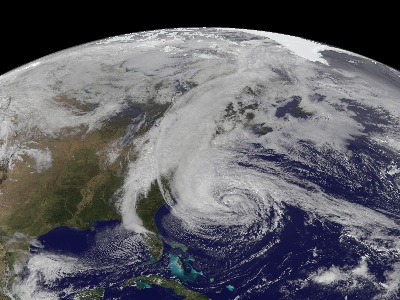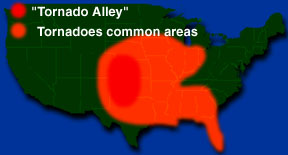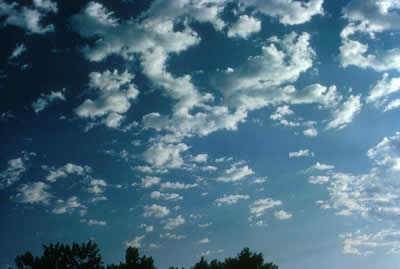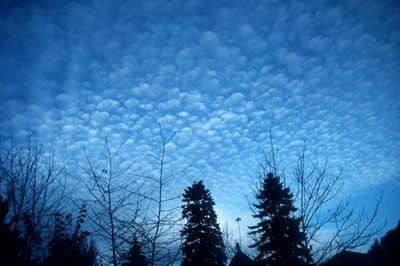When Nature Strikes: Tornadoes
Perhaps the most terrifying natural hazards are tornadoes. "Sudden," "huge," "devastating," "unpredictable" - these only partly describe why people fear these storms. Unlike hurricanes, which can affect large regions over many hours or days, tornadoes are relatively small and short-lived. But some can last for hours and leave widespread death and destruction in miles-long paths. Damage can seem to be random: houses on one side of a street may be ripped apart, yet those on the other side are unaffected. Most are single events, but some occur in clusters that include dozens of separate events, such as the "Super-Outbreak of 1974".
A tornado is, basically, a violently rotating column of air (vortex) descending from thunder-storms. Enhanced Fujita Scale". Like many weather events, thunderstorms which may spawn tornadoes follow a characteristic life cycle. There are also "tornado look-alikes" which people may confuse with actual tornadoes.
This "When Nature Strikes" video explains that scientists still do not understand why some storms produce the funnel clouds of tornadoes, but similar systems do not. Numerous research projects seek to understand why mesocyclones in supercells produce the most destructive and deadly tornadoes.
"What Could You See as a Tornado Approaches?" classroom activity
"When Nature Strikes" is produced by NBC Learn in partnership with the National Science Foundation.
You might also be interested in:

As a strong hurricane heads towards a vulnerable coast, people take precautions - boarding up houses, packing the car, and evacuating. These massive storms can spell disaster for people in hurricane prone
...more
Below is a list of some weather conditions that call for an advisory, watch, or warning. Heat Advisory/Warning: A heat advisory is issued when the daytime temperature will be 105ºF (40.6ºC) for three hours
...more
The land which stretches from Texas to Manitoba is relatively flat, most of which is part of the Great Plains in the United States. The flat land is a good breeding ground for the storms which produce
...more
Most tornadoes form in a part of a supercell thunderstorm called a mesocyclone. The mesocyclone draws energy into the storm so it can last for hours. Scientists aren't sure why, but some can create tornadoes.
...more
Altocumulus clouds (weather symbol - Ac), are made primarily of liquid water and have a thickness of 1 km. They are part of the Middle Cloud group (2000-7000m up). They are grayish-white with one part
...more
Altostratus clouds (weather symbol - As) consist of water and some ice crystals. They belong to the Middle Cloud group (2000-7000m up). An altostratus cloud usually covers the whole sky and has a gray
...more
Cirrocumulus clouds (weather symbol - Cc) are composed primarily of ice crystals and belong to the High Cloud group (5000-13000m). They are small rounded puffs that usually appear in long rows. Cirrocumulus
...more














